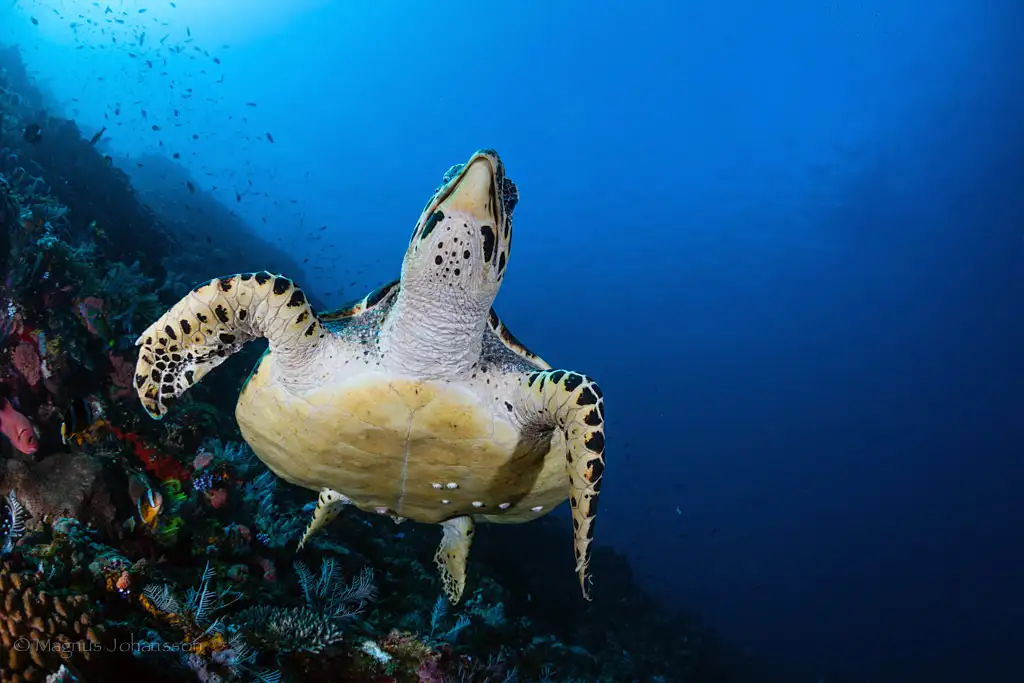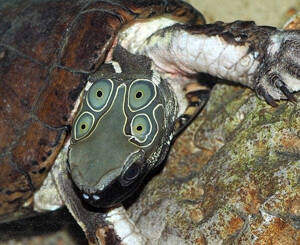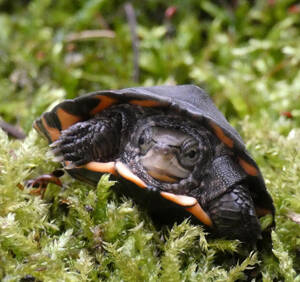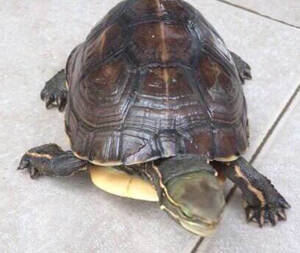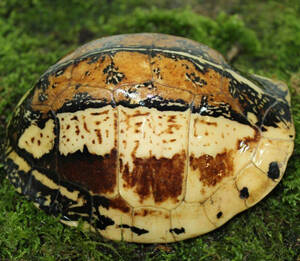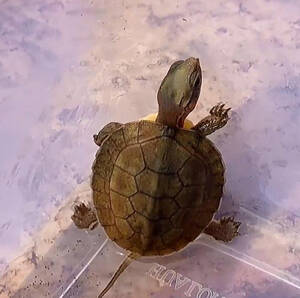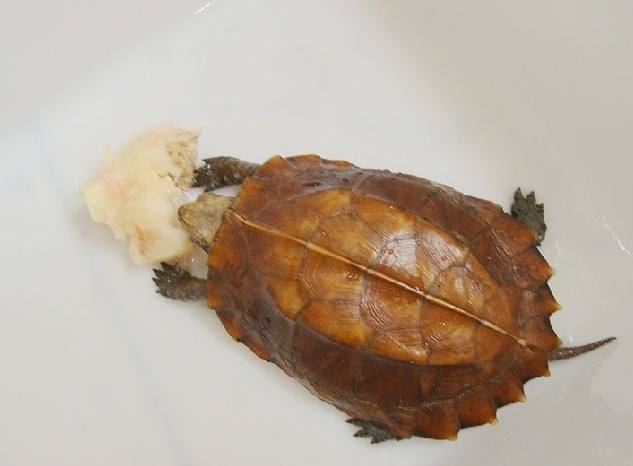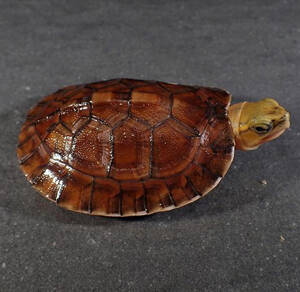Cuora yunnanensis
IUCN
LCBasic Information
Scientific classification
- name:Cuora yunnanensis
- Scientific Name:Cuora yunnanensis,Yunnan box turtle,turtle
- Outline:Testudines
- Family:Testudinidae B.turtle
Vital signs
- length:16-22cm
- Weight:700-1000g
- lifetime:50-60years
Feature
The carapace is slightly flat, the rear edge of the plastron has a clear notch, and there are no three black vertical lines on the back
Distribution and Habitat
The Yunnan box turtle is only known to be distributed in Kunming, Yunnan, China, and may be distributed at the border between Guangxi and Yunnan.
Appearance
The body is of medium size. The snout protrudes from the upper jaw, which is not hooked. The nostrils open at the tip of the snout. The skin of the head and back is smooth, the eyes are large, and the orbital diameter is 5.7-6.5 mm, which is larger than the distance between the orbits.
The carapace is oval, with a raised ridge, and the front and rear edges are rounded or the rear edge is slightly missing. It has three ridges, and the ridge is obvious. There is one cervical shield, which is relatively large, trapezoidal or nearly rectangular. There are 5 vertebral shields, the first and fifth are fan-shaped, and the rest are hexagonal, and the width is greater than the length. There are 4 pairs of costal shields, except for the last pair, the width is greater than the length. There are 12 pairs of marginal shields, and the outer edges on both sides are slightly upturned. The plastron is slightly shorter than the carapace, with a rounded front edge and a concave rear edge. The order o
Details
Yunnan box turtle is called Yunnan box turtle in foreign language, and has no subspecies.
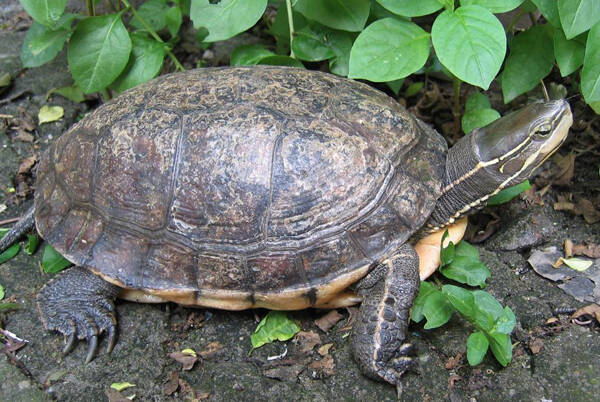
Yunnan box turtle was originally named after the specimen collected by foreign missionary Boulenger in Yunnan in 1906.
The Yunnan box turtle lives in the plateau mountains at an altitude of 2000-2260 meters, and lives in streams, lakes and or swamp wetlands. Usually, it likes to hide in the piles of rocks in the weeds and is not easy to be found by people. It is omnivorous and feeds on small fish, shrimps, earthworms, fruits, vegetables, etc. It can also be fed with artificial feed.
The Yunnan box turtle can close its shell for self-protection and is a powerful weapon to defend against enemies. When encountering enemies, it immediately retracts its head, tail, and limbs into the shell, and the plastron and carapace are combined to close the shell to form a box-like structure. If they are invaded by snakes, they close their shells and clamp the snake until the snake dies, and then the dead snake becomes its delicious meal.
In captivity, each female Yunnan box turtle lays eggs once or twice a year, 4–8 eggs each time (up to 8 eggs per year). After incubation at 28-30°C for 64-68 days, pups emerge, weighing 6.5-8.3 grams and 32-35 mm in length.
Yunnan box turtles are extremely rare in nature, with only 6 holotype specimens known to be preserved in the British Museum and Shanghai Natural History Museum. After a new species was published based on specimen No. 6 of Yunnan box turtle in 1906, No. 1 was reported in Xishan, Kunming in 1946. As of 2007, no specimens have been reported, and it is called an "extinct in the wild" species. It is reported that there are only 1-3 specimens in China, which are preserved in relevant scientific research institutions. However, there are other reports that a living female Yunnan box turtle was found in May 2004, and a living male Yunnan box turtle was found by Mr. Wu Hui in Yunnan Province in June 2005. Based on this, it is inferred that although the Yunnan box turtle is in an endangered state, there should still be a very small number left in the wild. In 2009, three females and one male were found during a scientific expedition in Yunnan, and then the next generation was bred under artificial breeding. Due to its extremely rare number, it was rated as functionally extinct in the 1996 "China Species Red List" assessment level. Around 2000, the species was declared extinct internationally.
Due to excessive forest development, changes in natural ecosystems, and indiscriminate hunting by people, the survival and reproduction of Yunnan box turtles are seriously threatened. The number of wild Yunnan box turtles is very rare.
Yunnan box turtle can be used for medicinal purposes, and its efficacy is similar to that of three-lined box turtle. It can be used as medicine to nourish and strengthen the body, dispel wind and dampness. It is mainly used to treat physical weakness, shortness of breath and fatigue, rheumatism and pain. It can be cooked or prepared into medicinal food, such as "stewed golden turtle with cordyceps". The meat contains protein, fat, calcium, phosphorus, iron and vitamin A, vitamin B1, vitamin B2, etc. It can also be used for ornamental turtle breeding.
Listed in the "Red List of Endangered Species of the World Conservation Union" (IUCN 2009 ver 3.1) - Critically Endangered (CR).
Listed in Appendix II of the Convention on International Trade in Endangered Species of Wild Fauna and Flora (CITES).
Listed in the List of Nationally Protected Wildlife in China—Level II.
Listed in the Red List of Biodiversity in China—Vertebrate Volume (Reptiles)—Critically Endangered (CR).
Protect wildlife and stop eating game.
Maintaining ecological balance is everyone's responsibility!

